The Middle Stone Age of South Africa: Symbolism

Dear Readers
In this series of posts we are focusing on an in-depth look at The Middle Stone Age of South Africa.
Please check out the previous posts in the series below:
The Middle Stone Age in Southern Africa : The emergence of anatomically correct modern humans
The Middle Stone Age in Southern Africa : Characteristics and the artefact sequence
The Middle Stone Age in Southern Africa :Dating and Palaeoenvironments
The Middle Stone Age in Southern Africa: Subsistence and behaviour
And now for our final part:
The Middle Stone Age of South Africa: Symbolism
We have little archaeological evidence for Middle Stone Age (MSA) social and symbolic behaviour. This may indicate fundamental differences between the MSA and the Late Stone Age (LSA). It also suggests that the MSA people's worldview was different and that they did not have the same kind of visible symbolism as that of the Holocene LSA people. Questions of modern cognition and behaviour are discussed by Deacon and Deacon (1999:100-102).In contrast with the widespread expression of art during the LSA, there is little evidence for MSA art or decoration. The following represent examples of few incidences where art or decoration was found at MSA sites:
Ochre and haematite
Ochre or haematite the most common non-lithic material. In almost every MSA site, lumps of yellow and, in particular, red ochre are found which may have been used in rituals, for decoration and other, unknown, purposes. Some pieces have smooth facets and well-rubbed and bevelled edges and seemed to have been used as crayons. Ochre is abundant in the Table Mountain Sandstone series and is intrusive in the rockwalls of some caves and rock shelters. At Lion Cavern in Swaziland near Border Cave, extensive mining for special haematite is associated with MSA stone tools dating back to perhaps 110 000 Before Present (BP) (Volman 1984:215).
Grindstones with ochre staining, as well as numerous ochre crayons, were recovered from Olieboomspoort in the Limpopo Province (Mason 1969:259).
Burial Practises
The only burial that can possibly date to the MSA is that of the Border Cave infant associated with MSA levels with an inferred dating of ca 105 000 +- 5000 BP. Ochre and a perforated *Conus shell* were found in association with his burial.Transportation of material
Fragments of seashell were found in MSA levels in Apollo XI cave, providing possible evidence for the transportation of materials over long distances. The perforated Conus shell found in association with the Border Cave burial originated from the coast more than 80 km (50 miles)away.
Ostrich eggshells
Objects such as ostrich eggshell beads, fragments of ostrich eggshells water bottles, bone tools and painted stones which featured profusely in LSA archaeological deposits are either very rare or nonexistent in MSA levels. Incised fragments of ostrich eggshell have been found at Apollo XI in Howiesons Poort levels. The incised ostrich eggshell fragments from Howiesons Poort MSA layers at Diepkloof may be decorated objects.Bone Implements
Generally, artefacts made from organic materials (including bone) are rare. This may indicate that these materials were not regarded as an important source of raw material for artefact manufacture during the MSA. Current research such as that conducted at Blombos Cave may, however, prove otherwise in future. Two bone points and approximately 20 bone awls were recovered from MSA levels at Blombos Cave. The points are similar to those used by LSA people on their arrows, while the awls were probably used as boring or piercing tools (Henshilwood & Sealy 1998:3)
A single ground bone point, 77 mm long and 5 mm at the greatest diameter, was found in Howiesons Poort layers in the 1967/68 Klasies River Mouth excavations. This bone point is possibly invasive, given that no other examples have been found. Nor is there any debris from bone point manufacture from MSA sites. Two rib fragments with serrated edges, and small bone shaft fragment with four thin parallel lines scratched across it, are found in the MSA layers at Klasies River Mouth. A charred notched rib fragment, ground bone "daggers" made of spilt wart-hog or bushpig tusk fragments and acaia thorns with utilised tips may have served as awls at the Border Cave, post Howiesons Poort MSA layers.
A fragment from MSA deposits at Florisbad may be that of a throwing stick; if so this indicates woodworking.
Rock Art
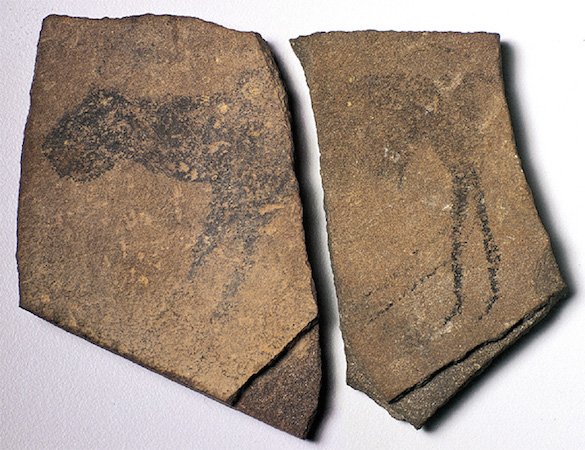
Slabs from Apollo XI en.wikipedia.org/wiki/Apollo_11_Cave
Stone Tools
Some researchers suggest that MSA artefacts have symbolic meaning.Patterning in stone artefact assemblages may be result of many factors, such as the following:
- the cultural norms or structuring principles within societies
- the general level of technological
- the intended function
- the raw material
In modern and possibly LSA and Upper Palaeolithic societies, style or patterning often has a considerable symbolic component. It also reflects ethnicity and identifies a society in time and space.
Ethnographic data from modern Kalahari San suggest that the seemingly standardised, backed artefacts from Howiesons Poort levels may have symbolic meaning. Wadley (1987:90-91) points out that there broad similarities between Howiesons Poort and the Wilton Industry in the LSA (eg the presence of backed artefacts). She suggests that a flexible social organisation which involved the aggregation and dispersal of bands, similar to that documented among the modern Kalahari San, may have appeared for the first time during the Howiesons Poort.On the other hand, data from Klasies River Mouth are being used by Hilary Deacon to show that Howiesons Poort coincides with deteriorating environmental conditions at the start of the last glaciation. He argues that attempts to maintain populations and their social structures under such conditions resulted in considerable social stress. He also suggests standardised backed artefacts in the Howiesons Poort could have played the same role in boundary marking and a gift exchange as social mechanisms to maintain populations and cope with stress as do the hafted metal projectiles points among modern Kalahari San. Wurz (199:46) goes one step further and states that the standardisation backed artefacts (prescribed by social rules) of the Howiesons Poort indicate symbolic, and therefore modern, behaviour.
The main reason for backing lithics is to make hafting easier:
Backing is usually identified as an intentionally dulled edge, accomplished by chipping or form grinding or abrading the edge. Eg: a backed blade may be defined as a blade (or flake) that is intentionally dulled on a margin so it can be hand-held safely (Andrefsky 1998:xxi, 163)
There is definite evidence of planning, symmetry and aesthetics in MSA stone artefacts.
The MSA attributes can best be determined by studying MSA stone tool assemblages rather than by trying to use modern ethnographic data, simply because Late Pleistocene behaviour may have no modern analogies. Evidence of symbolic behaviour of the South African hominins may not have been preserved in the archaeological record; alternatively, symbolism may not have developed (owing to conservatism and lack of innovation in low-density demographic conditions [Thackeray 1992]).
Subsistence and social behaviour may be determined by anatomical development, environmental or demographic conditions, or by available technology. Modern behaviour, as we know it, may not have been likely until neurological changes occurred, perhaps around 40 000 BP (although it may not be possible to identify this in fossil record).
This concludes our in-depth look into The Middle Stone Age of South Africa, we will continue our journey in our next series of posts by going in-depth into The Later Stone Age in South Africa...
All images are linked to sources in their description
References are stated within the text
Thank you for reading.
Thank you @foundation for this amazing SteemSTEM gif

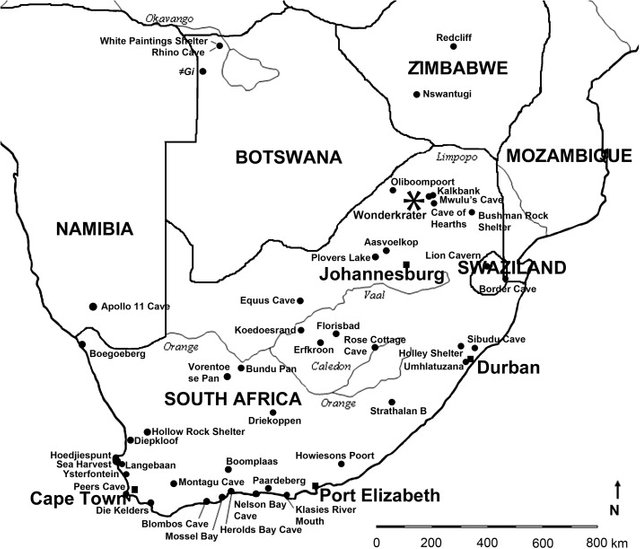
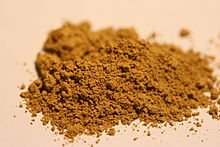
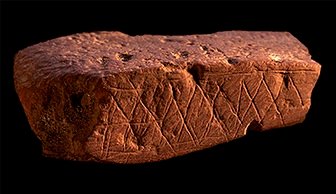
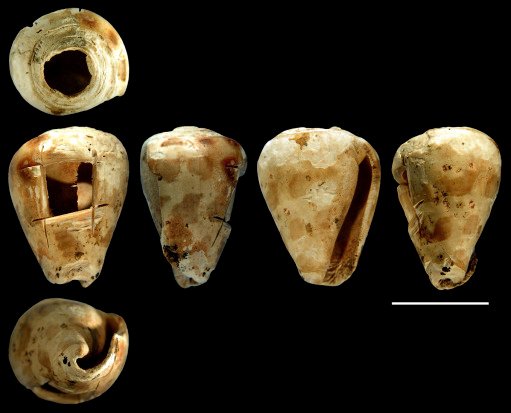
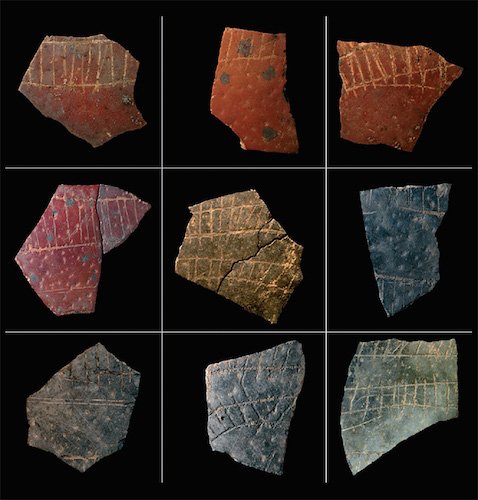
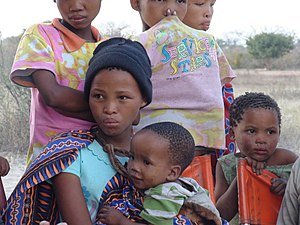
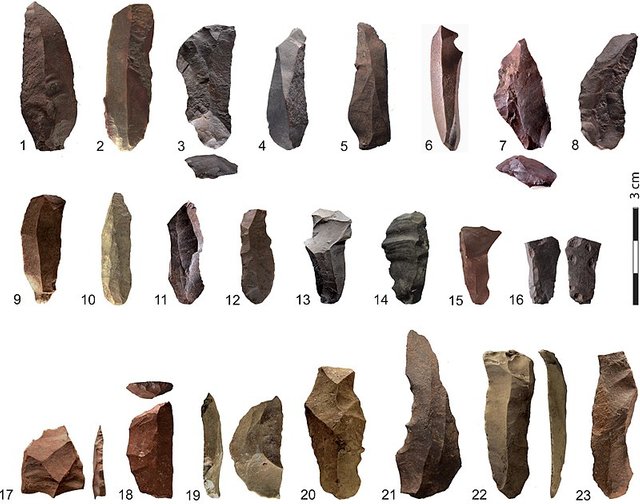
„Egypt is part of Africa“ this was one of the main topics a few years ago at the „SÄK“ a german annual conference of Egyptologists. And indeed - we cannot draw geographical borders when we want to discover our human heritage. Thank you so much for this amazing series.
You know - I was waiting for the ostrich egg shells. ;) So here is my „gift“ for you: an ostrich eggshell vessel found in Dakhla oasis in the eastern egyptian sahara (Egyptian Museum Cairo, JE 98774).
(Image source: Zoest, Carolien van, Treasures of the Dakhleh Oasis: an exhibition on the occasion of the fifth International Conference of the Dakhleh Oasis Project, Cairo 2006, 23.)
By the way: these decorated shells you mentioned have been assumed to be labels marking the property of certain persons or families. (See Texier, Jean-Pierre u.a., A Howiesons Poort Tradition of Engraving Ostrich Eggshell Containers Dated to 60,000 Years ago at Diepkloof Rock Shelter, South Africa, in: Proceedings of the National Academy of Sciences of the United States of America 107, Nr. 14, 2010, 6180–6185).
Dig on and (hopefully) produce a lot of steem! ;)
Wow, I'm impressed with the knowledge and sharing in this group. I could be here all day reading the different posts.
Thank you! 🌸
I hope that especially the archaeology community will grow in future.
Yes, there's a lot of information coming out now, with Genetic sequencing, NGS..
Hello my favourite Egyptologist, Thank you firstly so much for a truly amazing comment . I absolutely love my gift and thank so much. The artwork is astounding, to say the least. I will definitely read up on the information you have provided. I catch up with soon on SteemSTEM chat:)
Great work Zest. I am interested in how the Dogon tribe of Mali, fit into all this.
Hey!!!! Hi @quantummonks, I truly love your curious mind, your comments and questions actually have energised my own interest in different aspects of acrhaeology. The Dogon Tribe fall into the West Africa and which I am not qualified to comment on, but with that said, I am going to do some of my own inquiries and research and write a post on this Tribe just for you:)
:-)
Thats is very usefull knowledge for me thanks so much @zest
Great article. Resteemed.
Hi @mother2chicks. I am truly appreciative for your comment, support and resteem. Thank you so very much:)
We are treasure hunters as well. You are welcome. 🐓🐓
Good post, Africa is very rich in these kind of things...
Hi @farseer. Thank you for the great comment. Africa is a continent that is filled with wonder, mystery and treasures. Hopefully one day you will visit:)
Oh yes, I would like to visit africa one day..
Looking forward for more posts :)
Hi @farseer. Thank you for the comment.
I look forward to reading your other work. Since I saw human DNA origins series on TV & how humans may have started in africa somewhere I've had it on my bucket list to do more research. I'm interested in africa vs egypt vs myans vs china vs others esp ancient constructions eg pyramids etc.
Upvoted and also resteemed!
Dude it takes time to compile a very 'well-packed' post like this. I really learned a lot. Thank you, good luck and best wishes :D
Hi @lordkingpotatoe. Thank you so much for your really great comment. All the luck and best to you as well:)
Congratulations @zest, this post is the second most rewarded post (based on pending payouts) in the last 12 hours written by a User account holder (accounts that hold between 0.1 and 1.0 Mega Vests). The total number of posts by User account holders during this period was 1013 and the total pending payments to posts in this category was $1616.78. To see the full list of highest paid posts across all accounts categories, click here.
If you do not wish to receive these messages in future, please reply stop to this comment.